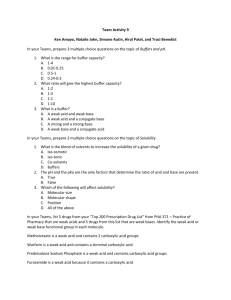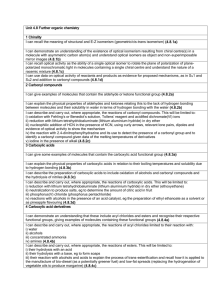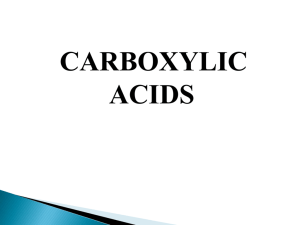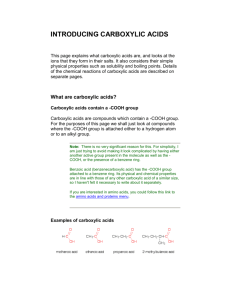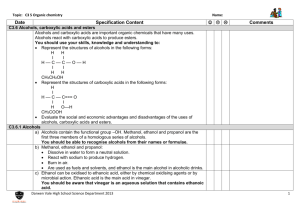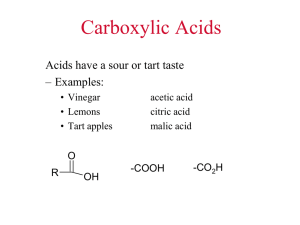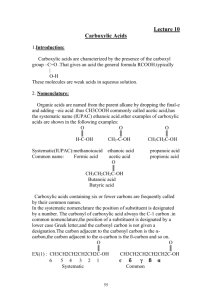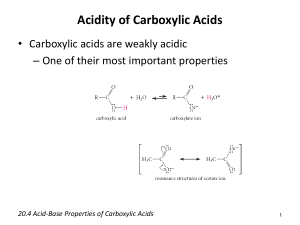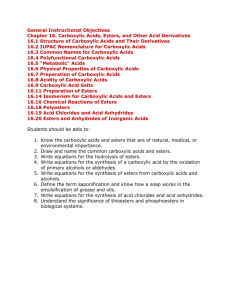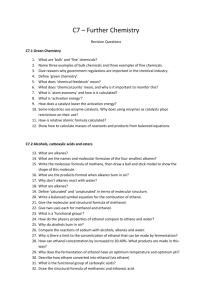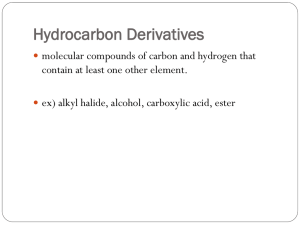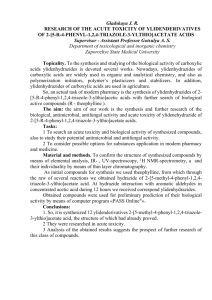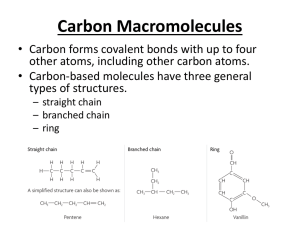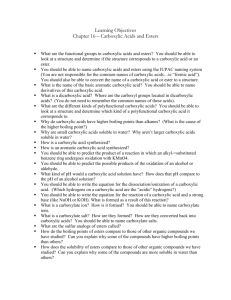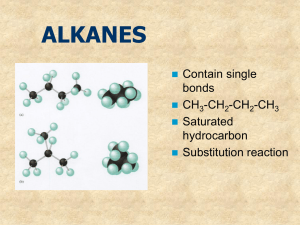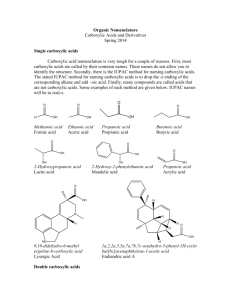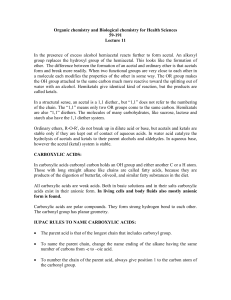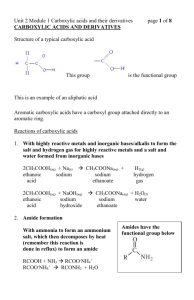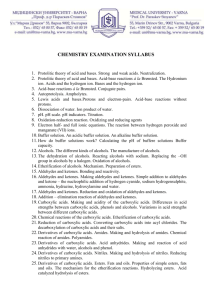Carboxylic Acids and Bonding
advertisement
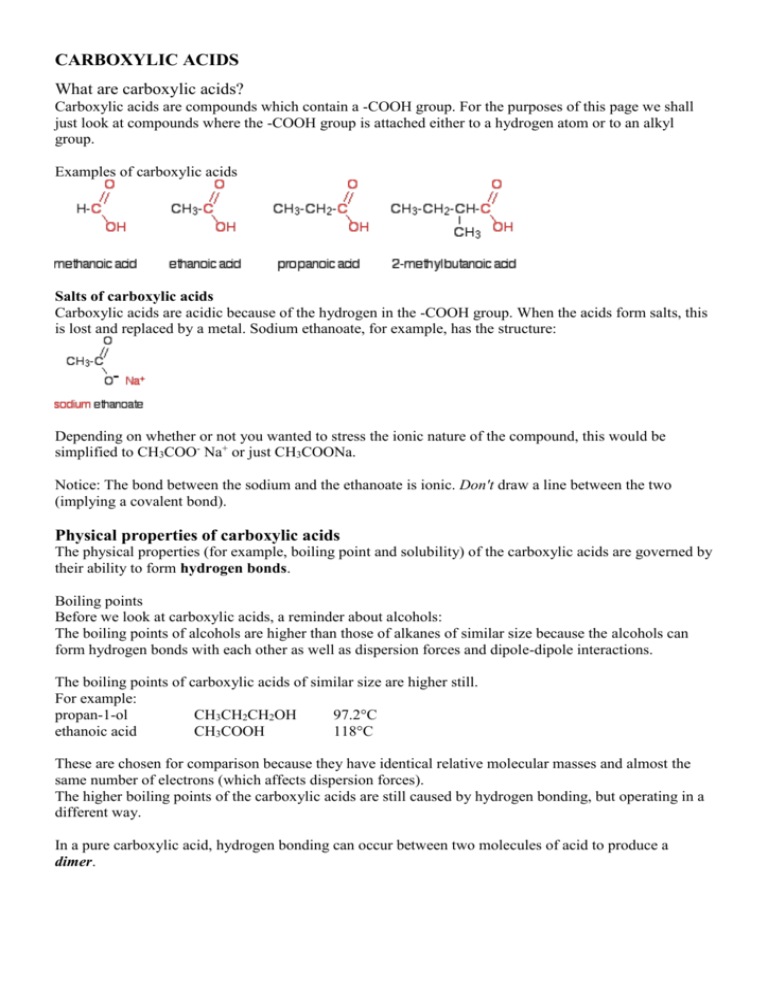
CARBOXYLIC ACIDS What are carboxylic acids? Carboxylic acids are compounds which contain a -COOH group. For the purposes of this page we shall just look at compounds where the -COOH group is attached either to a hydrogen atom or to an alkyl group. Examples of carboxylic acids Salts of carboxylic acids Carboxylic acids are acidic because of the hydrogen in the -COOH group. When the acids form salts, this is lost and replaced by a metal. Sodium ethanoate, for example, has the structure: Depending on whether or not you wanted to stress the ionic nature of the compound, this would be simplified to CH3COO- Na+ or just CH3COONa. Notice: The bond between the sodium and the ethanoate is ionic. Don't draw a line between the two (implying a covalent bond). Physical properties of carboxylic acids The physical properties (for example, boiling point and solubility) of the carboxylic acids are governed by their ability to form hydrogen bonds. Boiling points Before we look at carboxylic acids, a reminder about alcohols: The boiling points of alcohols are higher than those of alkanes of similar size because the alcohols can form hydrogen bonds with each other as well as dispersion forces and dipole-dipole interactions. The boiling points of carboxylic acids of similar size are higher still. For example: propan-1-ol CH3CH2CH2OH 97.2°C ethanoic acid CH3COOH 118°C These are chosen for comparison because they have identical relative molecular masses and almost the same number of electrons (which affects dispersion forces). The higher boiling points of the carboxylic acids are still caused by hydrogen bonding, but operating in a different way. In a pure carboxylic acid, hydrogen bonding can occur between two molecules of acid to produce a dimer. This immediately doubles the size of the molecule and so increases the dispersion forces between one of these dimers and its neighbours - resulting in a high boiling point. Solubility in water In the presence of water hydrogen bonds are formed between water molecules and individual molecules of acid. The solubility of the bigger acids decreases very rapidly with size. This is because the longer hydrocarbon "tails" of the molecules make the molecules less and less polar. In this case, these broken hydrogen bonds are only replaced by much weaker dispersion forces. ********************************DH

